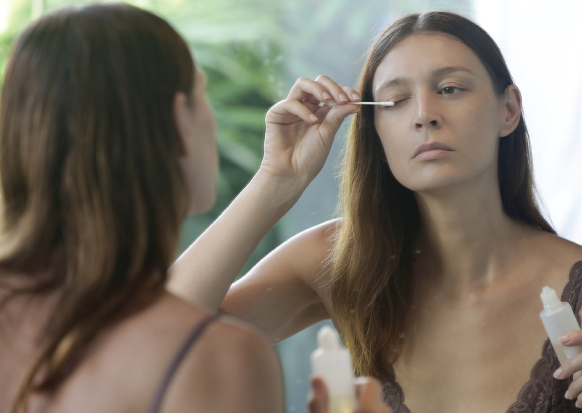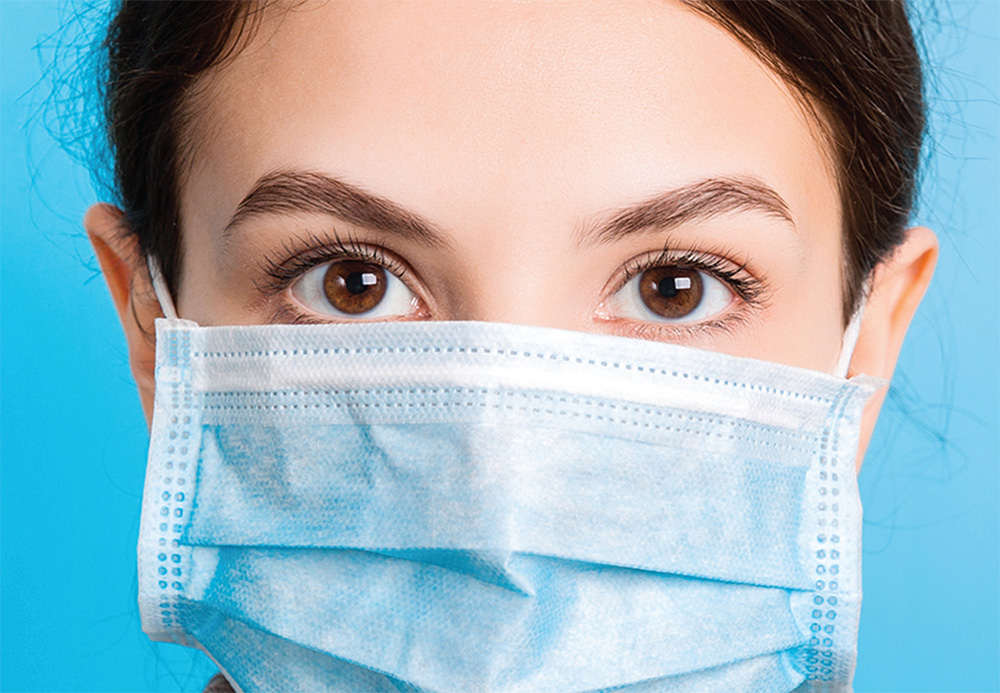
Caroline A. Chang, MD, with Lisette Hilton
Mask-wearing during the pandemic is driving patients with eyelash concerns to their dermatologists. While treatments to replace, grow, and maintain eyelashes have long been popular, the need to wear masks has fueled demand to address the still exposed parts of the face, including eyes.
Hair is an important identifying feature. When we lose hair, or lashes, or brows, it can be distressing. Dermatologists should keep this mind and not only address eyelash concerns, but also reassure patients that losing eyelash hair can be normal and that the hair will likely grow back.
Eyelash shedding 101
Eyelashes shed. People normally lose 1 to 5 lashes a day. Regrowth of eyelashes and eyebrows follows the same life cycle as other hairs on the body. But the growth phase is shorter than scalp hairs (the shorter the hairs, the quicker the growth cycle).1
Common conditions that cause patients to lose eyelash hair include clogged oil glands and blepharitis. The inflammation in the gland could cause the lashes to temporarily fall out around the gland.
Importantly, skin cancer can cause patients to lose eyelashes. Patients have come in noticing that they have lost eyelashes and point to a spot on their lid. A closer dermoscopic exam can help to confirm something like a basal cell carcinoma at the edge of the eye.
Patients who have hair loss not only on their lashes but also on the scalp and brows could have alopecia areata. These patients get patches, usually circular, of hair loss. On the eyelashes it would be seen as a contiguous patch of hair loss.
Other causes include trichotillomania, a condition usually related to some type of emotional or psychological stressor. Underlying health issues could cause rapid or global loss of eyelashes. Dermatologists should check thyroid function because both hyperthyroidism and hypothyroidism can cause hair loss. Also check the patient’s ferritin levels to rule out anemia. Anemia can cause general hair loss. For global hair loss, one can consider alopecia universalis, which results in patients losing all the hair on their scalp, eyelashes, and eyebrows.
Of course, patients undergoing chemotherapy or radiation therapy can experience global hair loss, including eyelashes.
Lifestyle tips for healthier lashes
It is important to first inform patients with general eyelash concerns (without a medical cause) about what’s normal. Some people have short eyelashes; some have long eyelashes. Do not pull them out, but if you do have eyelash loss because of picking or pulling, the lashes will grow back over time.
I tell patients to wash their eyes and lashes nightly. Always make sure to take off eye makeup before bed, so the oil glands don’t get clogged. Keep everything clean. Use a gentle soap and don’t scrub.
A healthy, well-rounded diet helps skin, hair, and nails. Foods with iron may be important because of the link bwteen anemia and hair loss. Some people like to take biotin supplements, which have been shown to help hair and nails grow more quickly. I recommend biotin as long as it does not interact with any other medications that a patient takes. While biotin will not help a balding man grow back hair, it does encourage faster hair growth in someone with hair loss from an injury, for example.

If someone wants to grow their lashes more quickly or longer, I recommend prescription Latisse (bimatoprost ophthalmic solution, Allergan) because it is studied, and we know about its proper use and potential side effects. Use caution when recommending over-the-counter (OTC) lash serums because additives in those products can potentially cause unwanted side effects. If a patient wants to use an OTC lash serum, advise him or her to stop using the products if they result in a rash, sensitivity, or an infection.
Tips for using Latisse
Latisse is an eye drop for glaucoma. When treating eyelashes, we instruct patients to use it nightly until they get to a lash length that makes them happy; then cut back and use the product once a week to maintain the length.
The most common side effect from Latisse in studies is irritation at the eyelid where patients apply the product. Very rarely, patients get pigmentation of the iris. Patients might also get a little bit of skin pigmentation at the lash line where they apply it. To help avoid these problems, instruct patients to use a very small amount—half a drop—and apply it to the lash line.
The packaging for Latisse, which now also comes in a generic version, comes with many little brushes. The idea is that patients should use a new brush for each application for sanitary reasons. If they do not want to use the little brushes, I recommend they get a separate eyeliner brush to apply Latisse to lashes. They should then wash the brush with soap and water after each use and leave it for the next day. They should not use that brush for makeup. Many OTC lash serums have one brush, which can increase infection risk because patients use the brush and put it back in the tube.
Other types of treatments for longer lashes include strip lashes that glue onto the eyelashes. Magnetic eyelashes attach to eyelids with magnetic lash liner. Lash extensions involve a technician gluing lashes onto individual natural lashes.
In all cases, I recommend patients see a technician who is trained and uses sterile technique. With at-home methods, patients run the risk of applying too much glue and then pulling out or damaging lashes in the process.
Overall, the caution for all those methods is the adhesive, which could be irritating to the skin. Some people develop an allergy to it. If they have an issue, I recommend that they have the lashes removed and do not use the treatment again. When removing lashes after any of these techniques, people should take them off gently or have a technician remove them to avoid pulling off natural lashes.
Off-label uses and cautions
Some of my colleagues are using Latisse off-label for eyebrow hair growth and are getting good results.
Latisse has been shown to cause fat atrophy. It is not recommended that people apply it to the lower eyelid because it can cause the fat in the lower eyelid to atrophy, causing a sunken eye appearance. Some people are using it off-label use to treat excess fat under the eye, but I do not have experience with that.
References
- Aumond S, Bitton E. The eyelash follicle features and anomalies: A review. J Optom. 2018;11(4):211-222. doi:10.1016/j.optom.2018.05.003
Disclosures
Dr. Chang reports no relevant financial interests.


